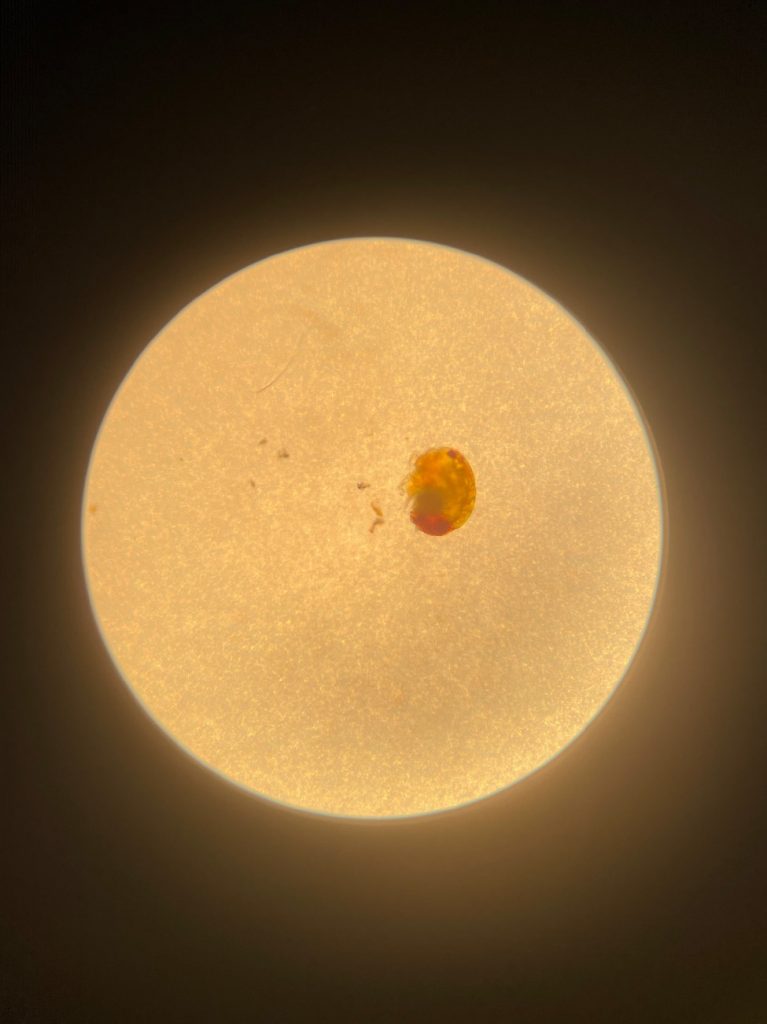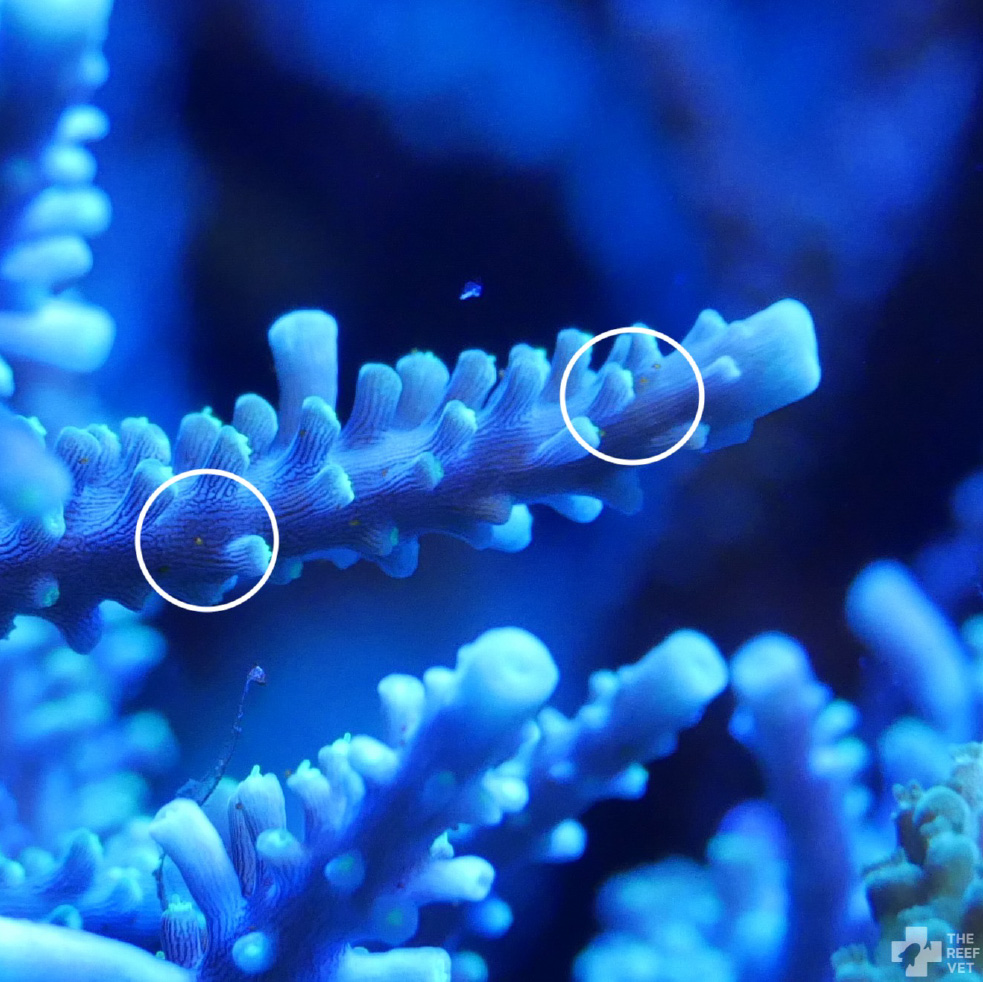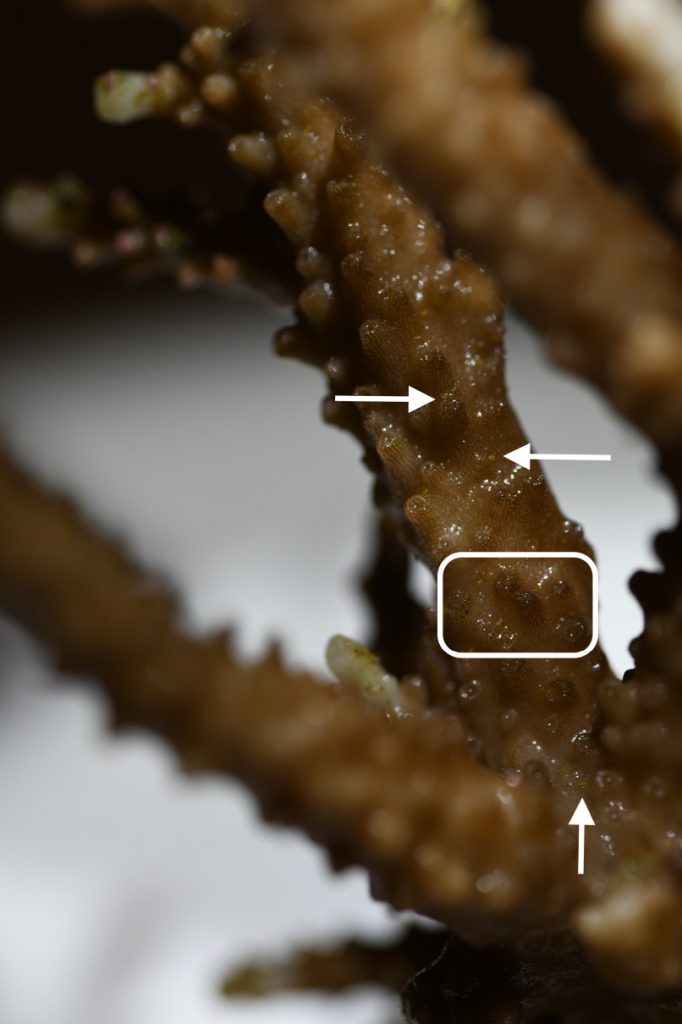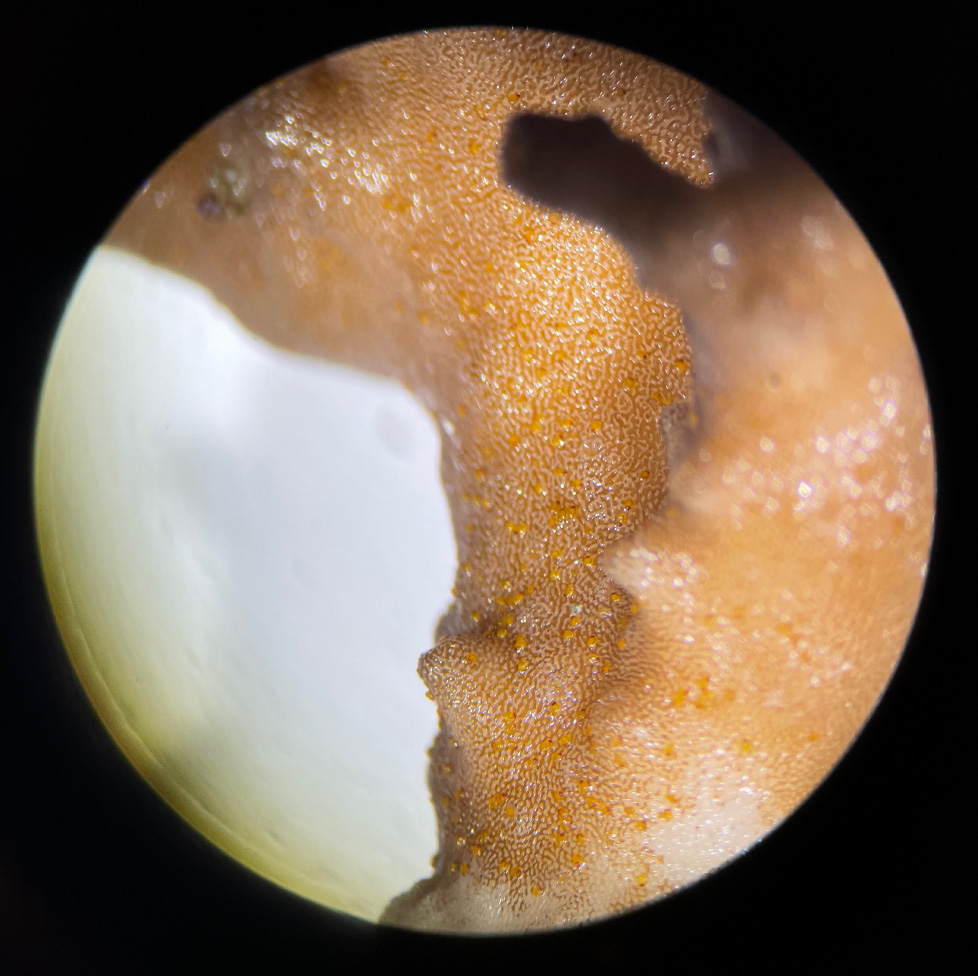One of the most common parasites to infect Acropora spp., T. acropranus will infect all the species in the genus. However, it appears “smooth-skinned species like A. granulosa and A. lokani may be the more susceptible.” Fortunately, there are established treatments that are effective in killing these parasites.

Tegastes acropranus 40x (Hall, 2021)
Host: Acropora spp. *It appears T. acropranus is Acropora specific.
Diagnostics: Adults can be seen on visual inspection; Light field microscopy is ideal.
Treatment 1: Drug: Interceptor Plus
Active Ingredient: Milbemycin Oxime **Also contains Praziquantel
Dosage: (1 Pill for Large Breed Dogs, White, 23.0mg)
*23mg/400g of tank water
*0.0575mg/1g of tank water
Procedure: 1) Grind the pill into a fine powder and dissolve it in RODI water. 2) Pour contents into high flow area.
3) Repeat the process 1 week after the first treatment
4) Repeat 2 weeks after the second treatment.

Tegastes acropranus to the naked eye. (Hall, 2021)

Tegastes acropranus to the naked eye.
Treatment 2: Drug: MilbeMite 0.1% (Otic Solution)
Active Ingredient: Milbemycin Oxime
Dosage: 0.760 μg/g
Frequency: Treat twice weekly for 3-6 weeks.
*MilbeMite is packaged in 0.25ml tubes. Apply 1 tube per 400 gallons to achieve the desired concentration.
*Treatment 2 should be tried first. It is at the minimal side of the dose range, reducing collateral effects, yet still effective. Larger tanks should use treatment 1, as it is uneconomical to try treatment 2. If the T. acropranus appear resistive to early treatments, switch to treatment 1, as the concentration of medication is higher (Hall, 2021)
*During both treatments, carbon and other filtration modalities should be turned off for 6-8 hours.
Hazards: Milbemycin Oxime is TOXIC to many invertebrates. Many species of crab, shrimp, and copepod are extremely susceptible to this medication and may die due to its administration. Adding the medication to the system has its inherent risks and should be done with caution.

Severe Tegastes acropranus infection. 5x
**Caution: Interceptor contains praziquantel (anthelminthic), which has the ability to kill beneficial worms and feather dusters.
Conclusion: Treating a reef tank systemically will always come with its inherent risks. However, in some cases, it must be done. Treatment should be early in the disease course, as Acropora’s health declines the risks of adverse effects of the medication increase. Treating an unstable system poses many more threats and challenges and should be handled cautiously (Hall,2021).
Find more HERE










0 Comments